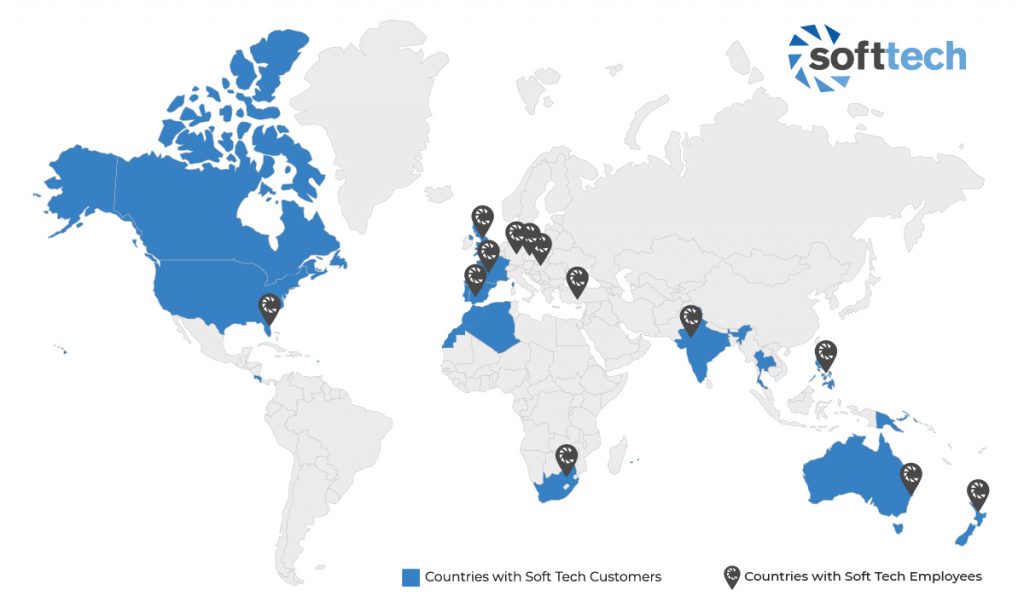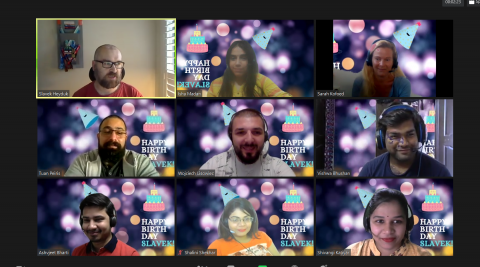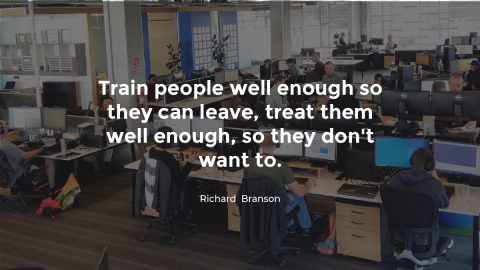How do you build a team culture when working remotely? The answer lies in the word ‘culture’ more than anything else, and it starts and finishes with sensitivity to the culture of the people who you are looking to meld into a team.
For several years, Soft Tech has operated as a globally spread organization. We are headquartered in New Zealand, but we have team members located all over the world. Australia, India, the United States, the United Kingdom and Europe, Philippines and depending on the time of year, we even have a developer who works off a boat travelling between Indonesia and Hungary. We also have team members of many different races and cultural backgrounds – I’m originally from Poland, for example.


Now that we’re all faced with a new normal where more people than ever are working from home or remotely, I thought it would be a good time to share my thoughts and practical experience of building great teams with people you don’t necessarily see in person.
In our case, this includes implementation team members located in New Zealand, India, and the United Kingdom, individuals with whom we have only interacted with using modern communication technologies. This experience has shown that without a doubt, great teams can and are built even where in-person meetings aren’t possible.
One of the most important principles when building a team is the distinction between a boss and a leader. Where a boss ‘lays down the law’, with instructions to be followed, a leader instead is a facilitator, communicator, and problem-solver. Implied in that is another fundamental principle: that of trust.
Where bosses might watch clocks, team leads communicate, encourage, assign tasks, discuss solutions, remove the roadblocks and trust each member to complete their part by the deadline, without peering over their shoulder. After all, shoulder-peering with remote working, while technically possible, is more than a little creepy!
Engage with and get to know your team members
But back to culture. There is no question that ‘Western’ culture is different from ‘Eastern’. Sensitivity to and genuine interest in the culture of the diverse people with whom you work plays a further fundamental role in the creation of dependable teams and dispersed trust.
There is always something we can learn from others; understanding different religious practices, different holidays, familial structures, and arrangements and more, is, if you get right down to it, just plain good manners and common courtesy.
Here’s a simple ‘thought experiment’. Ask those of us in the West for a few examples of leading mathematicians or scientists, and you’ll likely see the names of Isaac Newton, James Clerk Maxwell, Ernest Rutherford and of course Albert Einstein.
But how many would recognize the names of Muhammad ibn Musa al-Khwarizmi, Srinivasa Ramanujan, P.C. Mahalanobis or Aryabhata? I’ll bet very few.
What this illustrates is our Western bias. There’s nothing inherently wrong with that, as we are all products of our own environment, but it does show the potential for bias and even blindness to ‘other ways’ and a vast ocean of knowledge to which we haven’t been privy.
This points to something else I’ve discovered when working with people from different cultures (and note that even with the differences, there is always the ample common ground of humanity). In learning about the background of each team member, understanding their culture and incorporating it into your team culture, and respecting their heritage, you’ll also come to appreciate that there are many ways of achieving the same outcomes.
Different people have different ways to solve problems and this is a fundamental strength of diversity if harnessed appropriately. In our experience, what’s important is some standardization in processes and procedures – essential for quality control – but not in ‘ways of thinking’ or approaches to problem-solving. Facilitation of the exchange and sharing of knowledge is where you’ll find the magic, particularly when the team is given the headroom to decide the best solution to any given issue.
It all comes down to communication
Perhaps one of the most important principles is both simple in concept, and difficult in practice. Listen to understand, rather than listening to reply. This is the cornerstone on which trust – real trust – is built. This approach encapsulates what it means to treat people with the respect and dignity, which flows into empowering individuals to make an impact in their work and grow their responsibility in a reciprocal way. And, of course, with competing priorities, the time will come when you must stand up for your team. When that time comes, stand up you must! A corollary to that is owning your team’s successes and failures; successes are obviously preferred, but in every failure, there is a lesson. Embrace it, learn, and move on together.
Practical realities
Building a good team isn’t easy, even when you’re in the same office. It gets more challenging when separated by thousands of miles, cultural differences, time zones and different working habits.


With the right mindset, the practical challenges are addressed by technologies like Zoom or Teams, the Time Buddy app, WhatsApp and of course email and the good old telephone. These are supports to the team structure, rather than the structure itself. Use them wisely – for example, with Zoom, always use the camera so you can see the people you’re engaging with. After all, body language is a powerful communicator.
Schedule and keep regular team meetings, as well as regular one-on-ones. Use every opportunity to demonstrate positivity, honesty, and sincerity.
And when it comes to that most essential component of measuring performance, find the best way to do it. The old approach of measuring hours doesn’t apply – after all, measuring hours incentivises people to be slow. Measuring outcomes incentivises speed and accuracy, because if it is done fast and right, it leaves more time over for the individual to focus elsewhere.
A final thought: People make great companies


With the right approach, remote teams can perform as well as classic teams. When you build high performing teams of dedicated and motivated individuals, you’ll accelerate the performance of the whole business. And you’ll have people who take satisfaction in working with you for great outcomes.
